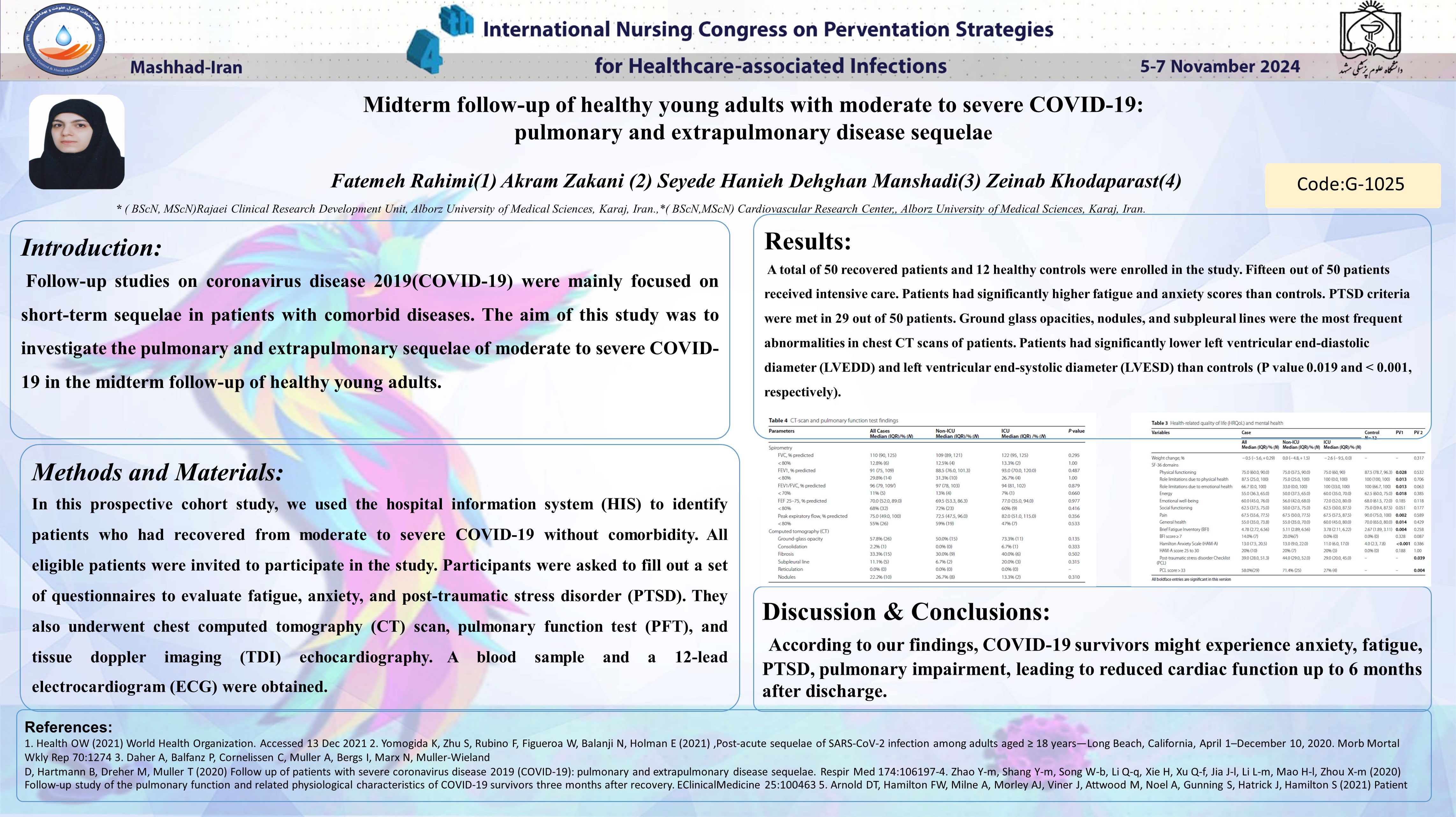بررسی پیامد های بالینی کووید19در فاز نقاهت بیماری در بازماندگان کمتر از 50 سال در مراکز تحت پوشش دانشگاه علوم پزشکی البرز
کد: G-1019
نویسندگان: Fatemeh Rahimi ©, Akram Zakani, Seyede Hanieh Dehghan Manshadi, Zeinab Khodaparast ℗, Tahereh SadeghI
زمان بندی: زمان بندی نشده!
دانلود: دانلود پوستر
خلاصه مقاله:
خلاصه مقاله
Midterm follow‑up of healthy young adults with moderate to severe COVID‑19: pulmonary and extrapulmonary disease sequelae Fatemeh Rahimi(1) Akram Zakani (2) Seyede Hanieh Dehghan Manshadi(3) Zeinab Khodaparast(4) * ( BScN, MScN)Rajaei Clinical Research Development Unit, Alborz University of Medical Sciences, Karaj, Iran. *( BScN,MScN) Cardiovascular Research Center,, Alborz University of Medical Sciences, Karaj, Iran. Background: Follow-up studies on coronavirus disease 2019(COVID-19) were mainly focused on short-term sequelae in patients with comorbid diseases. The aim of this study was to investigate the pulmonary and extrapulmonary sequelae of moderate to severe COVID-19 in the midterm follow-up of healthy young adults. Methods : In this prospective cohort study, we used the hospital information system (HIS) to identify patients who had recovered from moderate to severe COVID-19 without comorbidity. All eligible patients were invited to participate in the study. Participants were asked to fill out a set of questionnaires to evaluate fatigue, anxiety, and post-traumatic stress disorder (PTSD). They also underwent chest computed tomography (CT) scan, pulmonary function test (PFT), and tissue doppler imaging (TDI) echocardiography. A blood sample and a 12-lead electrocardiogram (ECG) were obtained. Results: A total of 50 recovered patients and 12 healthy controls were enrolled in the study. Fifteen out of 50 patients received intensive care. Patients had significantly higher fatigue and anxiety scores than controls. PTSD criteria were met in 29 out of 50 patients. Ground glass opacities, nodules, and subpleural lines were the most frequent abnormalities in chest CT scans of patients. Patients had significantly lower left ventricular end-diastolic diameter (LVEDD) and left ventricular end-systolic diameter (LVESD) than controls (P value 0.019 and 0.001, respectively). Conclusions: According to our findings, COVID-19 survivors might experience anxiety, fatigue, PTSD, pulmonary impairment, leading to reduced cardiac function up to 6 months after discharge.
کلمات کلیدی
COVID-19, Follow-up, Sequelae, Tissue doppler imaging echocardiography, Lung CT scan
